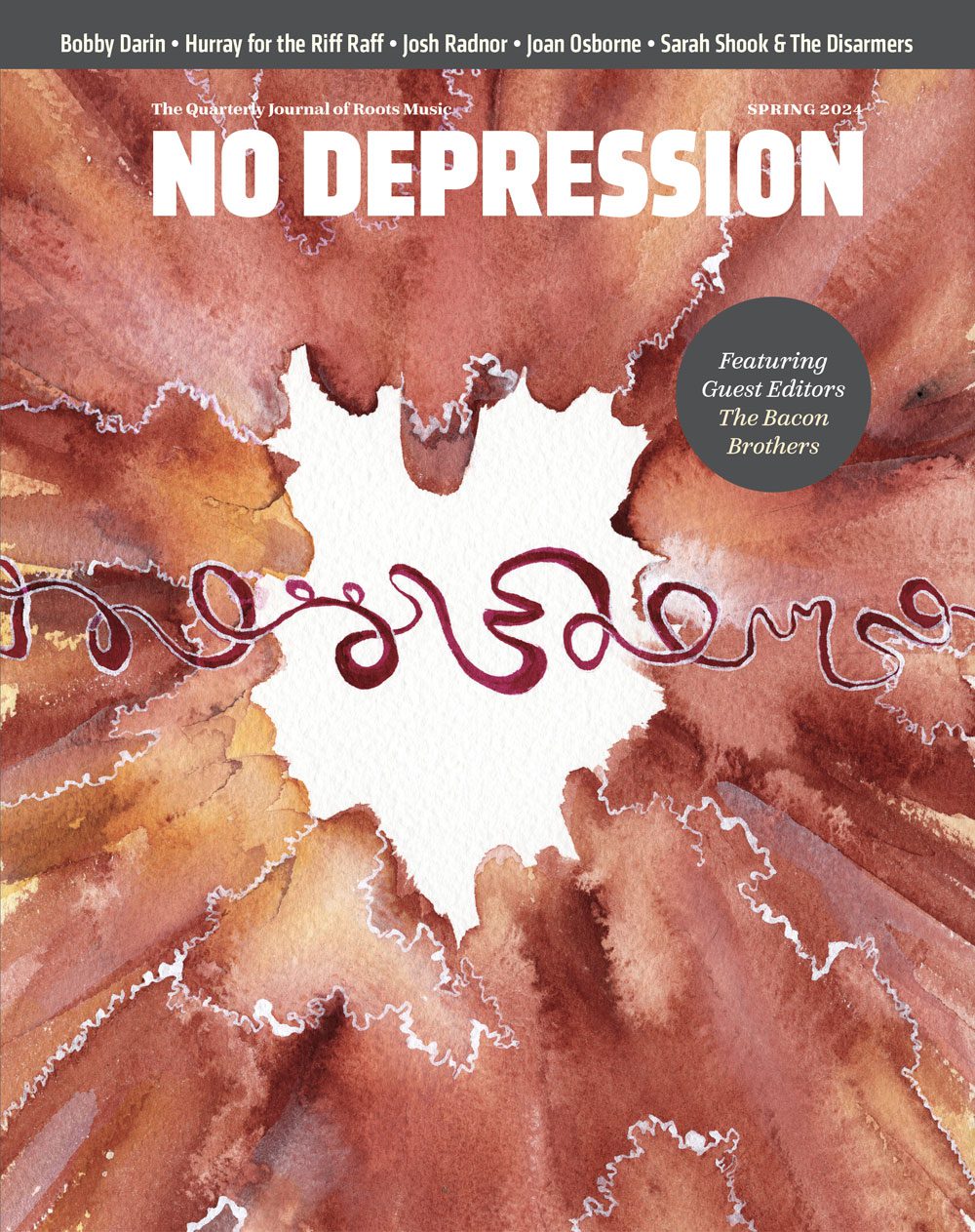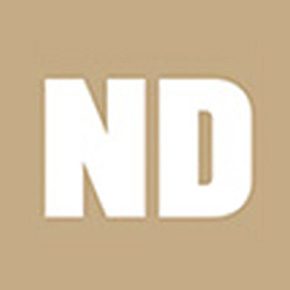Press On: Hatch Show Print enters its third century knowing they can still cut it in the design world
Perhaps the most accurate summation of twentieth-century American culture is to be found among the posters we create to sell or celebrate an instant. From “Uncle Sam Wants You” to “Loose Lips Sink Ships” to “Hell No We Won’t Go”, shifting political moods are indelibly marked by enduring slogans and the images that accompany them. In this way, we may remember the feats of Houdini, the prowess of pugilists, the marvels of long-ago sideshow artists. So, too, with handbills heralding the coming of traveling musicians.
Contrast, for example, the simple, stolid presentation of Carter Family flyers that proclaimed “This Program Is Morally Good” with the vibrant art nouveau revival of San Francisco’s late-1960s psychedelic explosion. Toss in the urban decay of late-’70s punk, followed by the silk-screened surrealism (Kozik, Coop, Kuhn, etc.) of the mid-’90s alt-rock explosion, and there is much to be learned from posters about the form and content of our culture’s constant internal dialogue.
Few small businesses have survived that turmoil, but Hatch Show Print has quietly kept busy printing posters for Southern entertainers of all stripes since 1889. Today is it preserved by the Country Music Foundation as a working shop, simultaneously producing tour posters for working musicians and high-visibility graphics for advertising agencies.
Located in downtown Nashville — Lower Broad, as the locals called it before the porn shops were closed down — Hatch shares the street with Robert’s Western Wear, where BR5-49 was once the house band, and Tootsie’s Orchid Lounge, sharing the alley from the Ryman Auditorium, right across from Ernest Tubb’s storied record shop. Today, Lower Broad is dominated by Planet Hollywood, the Hard Rock Cafe and the NASCAR Cafe. Though it remains a neighborhood in transition (and it’s odd, but at least the porn shop facades had some kinda bent soul), Hatch itself remains largely unchanged.
The shop’s survival has much to do with the stewardship of a former English student, songwriter and printmaker named Jim Sherraden, who has run the business since April 25, 1984 (but for ten months when he went to Europe and his then-roommate Robert Earl Keen took over).
“In 1878, two brothers came down from Wisconsin, with their dad, to start a small-job printing service called C.R. & H.H. Hatch,” Sherraden says, beginning a long history he and co-author Elek Horvath are now formally composing (to accompany 175 images) for publication by Chronicle Books, tentatively in the spring of 2001.
“They worked at a couple of different locations until 1923. Then Charles’s brother, Will T. Hatch, took the shop over and built the building that most folks would remember,” Sherraden says, referring to the firm’s former home on Fourth Avenue. “He built that in 1923, and it lasted until 1992. He died in 1952, and then they went through a series of owners until Bill Denny [son of the Jim Denny, the legendary WSM talent director who may or may not have made Elvis cry at the Opry] bought the shop in the early ’80s and hired me on to try to help get the thing back on its feet.”
Denny subsequently sold the shop to the Gaylord corporation, which owns WSM and the Grand Ole Opry and Wildhorse Saloon and a whole lot of other stuff. Gaylord in turn donated it to the Country Music Foundation in 1992. The Fourth Avenue location was torn down to make way for the Bell South tower, affectionately known in Nashville as the Bat Building. Bell South donated $100,000 so that Hatch could move to its present location — no small feat given the sheer weight of the equipment involved.
That, perhaps, requires some explanation. Hatch is a letterpress shop, and their five presses were state of the art during the Second World War. A letterpress (you probably saw one on “Bonanza”, or some other western, printing the community newspaper or a wanted poster) physically brings ink, paper, and raised metal or wood type together, sort of like a rubber stamp. The type (and carved images, called “cuts”) are arranged in a flat and very heavy tray. Most printing today is offset, but there’s no reason to bore you with the details of that.
Typefaces were converted from wood and lead to images on a filmstrip, and by the late 1970s typography had become a photographic process. The letter forms have since been converted again into digital data and are reproduced by computers. But with each generation of technology, new typefaces have been designed and old ones have fallen out of use. It is, then, possible for an astute graphic designer to subtly suggest different eras of American history simply by using typefaces that were in fashion then.
Hatch Show Print, like WSM and the Opry, benefited from Nashville’s central geographic location. They became the printer of choice for all manner of touring acts, from vaudeville to Negro League baseball barnstormers to the once and future stars of the Opry.
Generations ago there were many such shops in various corners of the United States. Today, Sherraden can tick off only three others still extant: one in Indiana, one in Baltimore, and one in Los Angeles that has modernized enough to be nontraditional.
The type and artwork (the cuts) for many of those old posters still exist, carefully arranged on shelves. Hatch selectively restrikes a dozen or so of their classic posters for sale, but that is not Sherraden’s principal goal for the shop. “The CMF wants me to preserve the integrity of the archive because it’s a bastion of Southern culture,” he says. “The shop got rifled through a little bit in the ’60s and ’70s, so we don’t have a complete archive. But we can’t cry because we’re creating an archive every day that we go to work here.”
Sherraden’s new posters at Hatch (they are designed by his small staff) suggest both the new and old through juxtaposition of type, color, and recontextualized cuts. “We’re very proud of the fact that we’ve been able to build something out of a technology that really isn’t modern,” Sherraden says. They have developed an internationally recognized design style, and Sherraden is now called to speak at design conferences with some regularity.
Hatch posters remain affordable, in large part because both the CMF and Sherraden (a former songwriter) insist that they be. For roughly $150 plus shipping, one may order 100 posters; you supply the words, they supply the design. They’ll print a few extra to be sold in the shop, which represents about 25 percent of Hatch’s revenue these days and helps defray the cost to struggling musicians.
Sherraden doesn’t view Hatch as a working museum of antique printing technology — he’s not interested in donations of old wood type, nor in cuts from other shops (though they do create fresh cuts and embellishments for clients) — but as an archive of the shop’s continuing role in Southern culture. The result, perhaps unintended, is that Hatch has almost become a verb in the design community, signifying a specific look achieved by worn (or distressed) wooden type and the inevitable imperfections of the printing process.
Probably Mr. Hatch would have restocked his type cases with fresh, crisp letter forms by now. Since wood type is no longer in production, Sherraden has made necessity a virtue.
“The number one thing,” he says, “is protection of the shop. This is a wonderful American treasure, and we’re not going to exploit it.”




